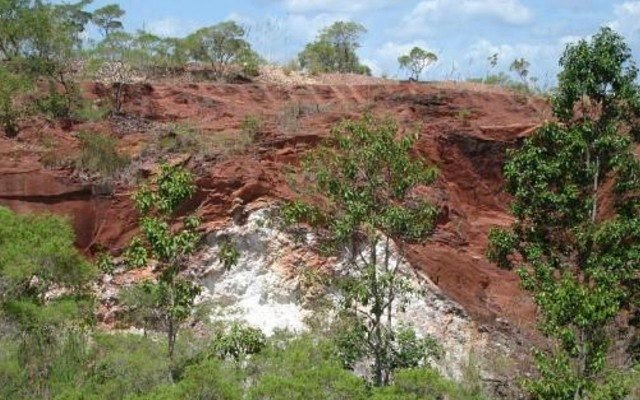Emerging developer Core Lithium (ASX: CXO) has announced a maiden mineral resource estimate for the Sandras deposit within its flagship Finniss lithium project in the Northern Territory.
The estimate of 1.3 million tonnes at 1.0% lithium oxide has boosted the project’s global resource base to around 6.3mt at 1.4% lithium oxide, from a modest 1.8mt at the start of the year.
This figure is expected to increase over the coming weeks as resource estimates are announced for new prospects at Carlton, Hang Gong and Lees-Booths-Link.
They will be added to lithium mineral resources already defined at the Grants and BP33 prospects.
“Adding [more tonnage] to the Finniss resource base is a great result,” said managing director Stephen Biggins.
“We believe the global resource base will grow even further over the coming months, given the quality of results received from recent exploration drilling at a number of [our] new prospects.”
Mr Biggins said the increased resource enhances the project’s potential to deliver robust returns, expected to be confirmed by an imminent definitive feasibility study for the development of a spodumene concentrate operation.
“The DFS will factor in the substantially-expanded resource base and extended mine life, optimising recoveries to deliver increased grade of product, as well as committed offtake and customer prepayment finance agreements,” he said.
Deposit database
The Sandras deposit is hosted within the Bynoe pegmatite field, situated 15 kilometres south of Darwin and extending up to 70km in length and 15km in width.
The database used for the mineral resource estimate contained a total of 30 reverse circulation holes for 4898m of drilling, with the majority of holes drilled at angles between 60° and 80° perpendicular to the strike of the pegmatite and on sections 40m apart.
Thirteen of the holes were drilled by Liontown Resources (ASX: LTR) in 2016, which acquired the Bynoe Project in 2016 with a view to exploring the contained lithium-bearing rare metal pegmatites.
While widespread lithium mineralisation was intersected, a commercial review by Liontown eventually showed that divestment of its regional tenements and resources would enhance the economics of Liontown’s future mining operations.
Liontown’s Bynoe tenure was acquired by Core in September 2017 for an upfront $3.5 million, after which Core drilled the remaining 14 RC holes in the Sandras database.
Mining and production
Core is targeting commencement of mining and construction at Finniss by mid-2019 and first production of high-quality spodumene concentrate shortly thereafter, subject to financing and regulatory approvals.
“Finniss has the best supporting infrastructure and logistics chain to Asia of any Australian lithium project,” Mr Biggins said.
“High grade, low processing costs and cheap haulage [to nearby ports and rail] make this project potentially one of the least capital-intensive and most cost-competitive spodumene operations in Australia.”
Core has established offtake and pre-payment agreements for Finniss and is in the process of finalising negotiations with some of Asia’s largest lithium producers.
At mid-afternoon, shares in Core Lithium were trading 8.62% higher at $0.063, while shares in Liontown Resources were steady at $0.026.
